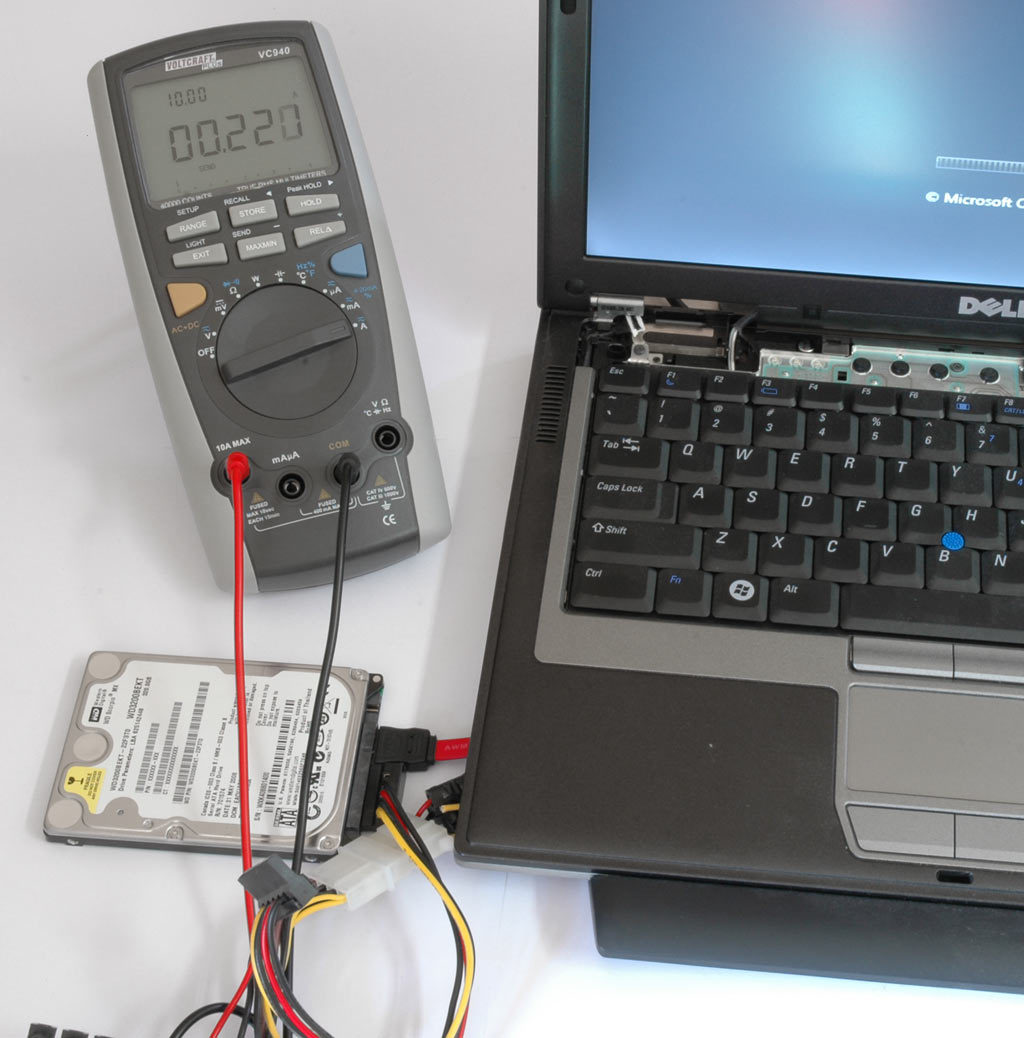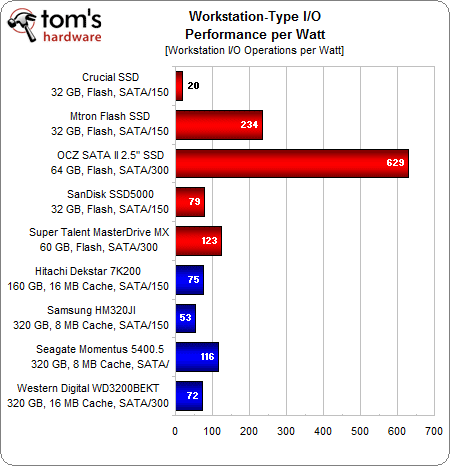Flash SSD Update: More Results, Answers
Test System and Power Measurements
Again we used the same Dell Latitude D630 notebook. We used a multimeter to measure the power requirement directly between the notebook interface and the drives’ connector.
| Notebook | Dell Latitude D630 |
| Mobile Intel GM965 Express Chipset | |
| CPU | Intel Core 2 Duo T9500 |
| 45nm ; 2.6 GHz ; 6 MB L2 Cache | |
| RAM | Corsair ValueRAM 2x 2048MB DDR2-667 |
| Hard Disk Drives | Hitachi HTS722016K9A300 |
| 160GB ; 7,200 RPM ; 16MB Cache ; SATA 3 Gb/s | |
| DVD-ROM | 8x DVD+/-R |
| Wireless | Intel 4965 WLAN (802.11a/g/n) |
| Screen | 14.1" WXGA+ (1400x900) |
| Graphics Card | Intel GMA X3100 |
| Power Supply | 9-Cell/85WHr Battery |
| System Software and Drivers | |
| OS | Windows Vista Ultimate 6.0 Build 6000 SP1 |
| DirectX Version | 10 |
| Platform Drivers | Version 8.2.0.1014 |
| Graphics Drivers | igdum32.dll (7.14.00.10.1253 |
Test 1 : Workstation I/O
Let’s look at the workstation I/O performance first. The test generates 80% read access and 20% writes, with 80% random access and 20% sequential, working with 8-KB blocks. Here are the performance results first :
Two Flash SSDs are considerably faster than the rest of the test bed : Mtron’s Flash SSD, which has been one of the fastest drives in our test lab, and the new OCZ SATA II 2.5” SSD. The latter has only arrived during the last few days. But there also are two Flash SSDs that deliver much weaker random I/O performance : Crucial and SanDisk. Let’s move on to the average power requirements the drives show during this benchmark.
Only two Flash SSDs are really more efficient than the hard drives : The new OCZ drive, which you will see is the prime example for a great SSD, and the SanDisk drive. That one, however, doesn’t quite perform very well. Super Talent is slightly more efficient at full random activity, while the Crucial SSD is a bit less efficient. But it’s important to bring performance into the equation, hence let’s look at performance per watt.
In random I/Os, there is more of a difference between various products than between HDD versus Flash SSD. Crucial’s SSD and the Samsung 320 GB 2.5” drive don’t provide a shiny performance per watt result and SanDisk only maintains its average result by being very efficient. However, it’s the new OCZ Flash SSD that really shines. It provides 5-6x more performance per watt than the mechanical hard drives. That’s precisely what our initial article should have said : most of the Flash SSDs just aren’t that much better — until now, as shown by OCZ.
Get Tom's Hardware's best news and in-depth reviews, straight to your inbox.
Current page: Test System and Power Measurements
Prev Page Hard Drives Can Be More Efficient Next Page Test 2: Streaming Reads


